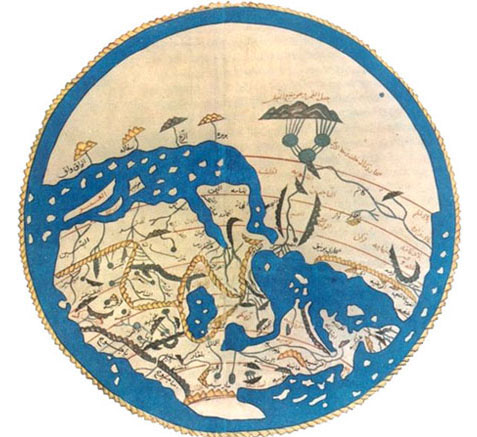Article of the Month - September 2021
“Zoroastrian Law and the Spread of Islam in Iranian society (Ninth–Tenth Century)”
(Christian C. Sahner: Oriental Studies, Oxford University)
Christian C. Sahner, "Zoroastrian Law and the Spread of Islam in Iranian Society (Ninth–Tenth Century),"
Bulletin of School of Oriental and African Studies 84, (2021): 67–93.
Nomination Statement:
Sahner’s survey of ‘Abbasid era Zoroastrian legal texts under Islam invites a reconsideration of the narrative of Zoroastrian decline, and outlines the potential of a "new" source (Zoroastrian responsa) for evidence of the social history of Muslim-Zoroastrian relations. It invites us to reconsider established narratives of the rapid decline of Zoroastrianism in the aftermath of the Muslim conquest, and suggests a greater potential than had been previously assumed for the situation of Zoroastrians under Islam to serve as a complimentary or counter-example for relations between Muslims and Christian and Jewish minorities in this period,
Publisher’s Abstract:
This article explores three important Zoroastrian legal texts from the ʿAbbasid period, consisting of questions and answers to high-ranking priests. The texts contain a wellspring of information about the social history of Zoroastrianism under Islamic rule, especially the formative encounter between Zoroastrians and Muslims. These include matters such as conversion, apostasy, sexual relations with outsiders, inheritance, commerce, and the economic status of priests. The article argues that the elite clergy responsible for writing these texts used law to refashion the Zoroastrian community from the rulers of Iran, as they had been in Late Antiquity, into one of a variety of dhimmī groups living under Islamic rule. It also argues that, far from being brittle or inflexible, the priests responded to the challenges of the day with creativity and pragmatism. On both counts, there are strong parallels between the experiences of Zoroastrians and those of Christians and Jews, who also turned to law as an instrument for rethinking their place in the new Islamic cosmos. Finally, the article makes a methodological point, namely to show the importance of integrating Pahlavi sources into wider histories of Iran and the Middle East during the early Islamic period.
Author’s Comment:
I am a historian of Late Antiquity and the early Islamic period. Much of my work deals with the earliest contacts between Muslims and non-Muslims, including the heirs of the various late antique empires and kingdoms that were swept away by the Arab conquests of the seventh and eighth centuries. To date, I have focused mainly on Muslims and Christians (e.g., in my last monograph,Christian Martyrs under Islam, Princeton, 2018). But for the past seven years or so, I've been immersing myself in the history of another non-Muslim community -- second only to the Christians in terms of size, but much-neglected in the scholarly literature on the period -- these are Zoroastrians, adherents of the former state religion of the Sasanian Empire. As a component of this, I have been studying Pahlavi, the Middle Iranian language in which most classical Zoroastrian texts are written.
What I've discovered is that there is a vast wealth of sources, seldom read by specialists in Islamic history, that discuss the earliest contacts between Muslims and Zoroastrians, and what's more, that cast fresh light on the gradual transformation of Iran into a "Muslim society." I'm trying to contribute to an established trend in my field, namely, enriching our study of Islamic origins by consulting texts produced by non-Muslims in languages other than Arabic (an approach closely associated with Patricia Crone and Michael Cook, Hagarism, Cambridge, 1977, among other titles).
The present article examines a collection of legal texts written by Zoroastrian priests during the ninth and tenth centuries, the height of Abbasid power. Among other things, these texts attempt to establish rules of engagement between Zoroastrians and Muslims, including on fraught issues such as conversion, apostasy, intermarriage, ritual defilement, commerce, etc. As I argue in the piece, they testify to the shrinking authority of the priests, who had once enjoyed tremendous political power in Sasanian times. I also argue that they provide a unique window into the manner in which these priests tried to refashion the Zoroastrian community from the rulers of Iran, as they had been in Late Antiquity, into one of a variety of dhimmi groups subject to the laws of an Islamic Empire.
Keywords: Islamic History — Zoroastrian Studies — Iran — Iraq — Sasanian Empire — legal history — Pahlavi — non-Muslims — Late Antiquity — Abbasid caliphate — conversion
Read the article here.
Would you like to discuss this article?
Start a thread on the Mediterranean Seminar list-server
See the other Articles of the Month here.
